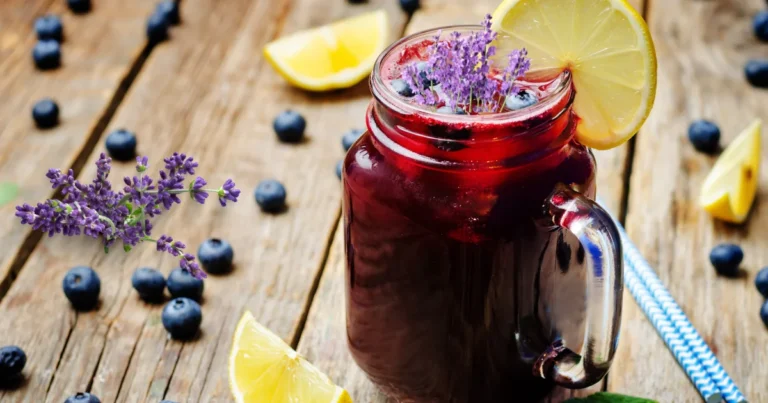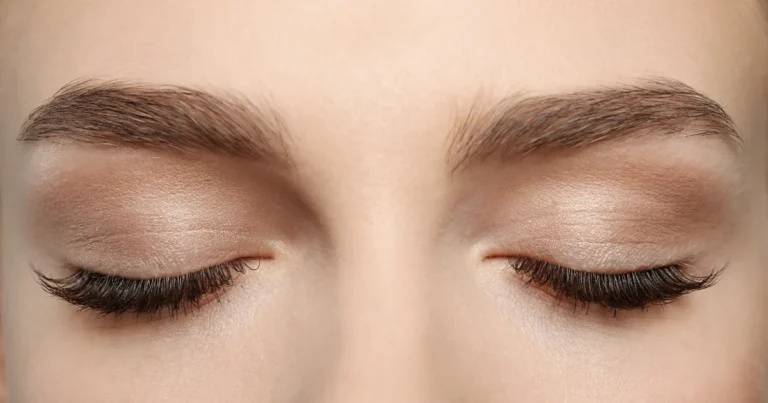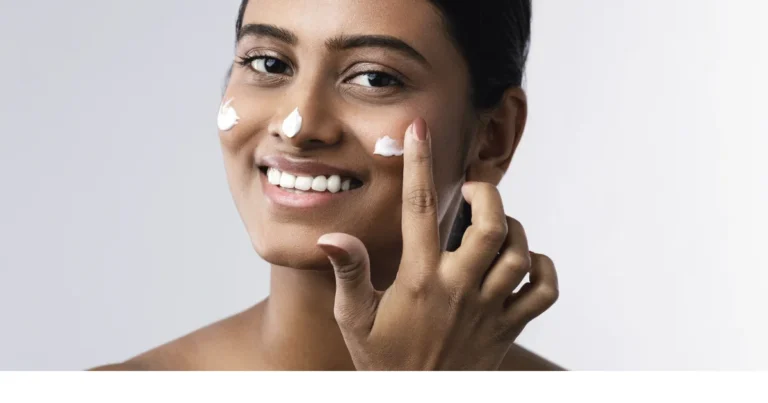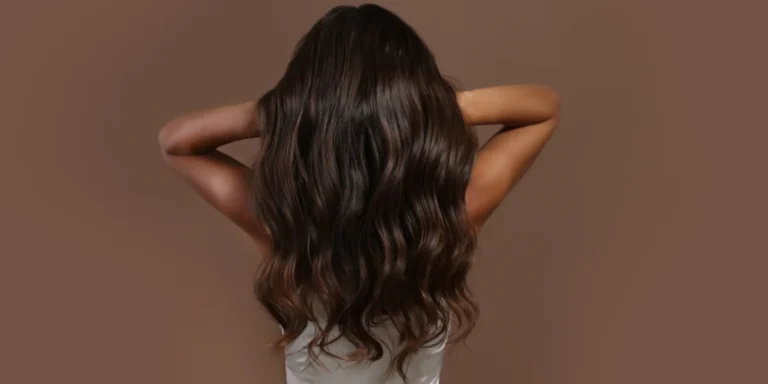Haircare Tips for Protecting Hair from Chlorine Damage
Exposure to chlorine, commonly found in swimming pools, can wreak havoc on your hair, leaving it dry, brittle, and prone to damage. However, with the right haircare routine, you can minimize the harmful effects of chlorine and keep your locks healthy and vibrant. In this comprehensive guide, we’ll delve into effective tips for protecting your hair from chlorine damage, ensuring you can enjoy your time in the pool without worrying about the consequences for your mane.
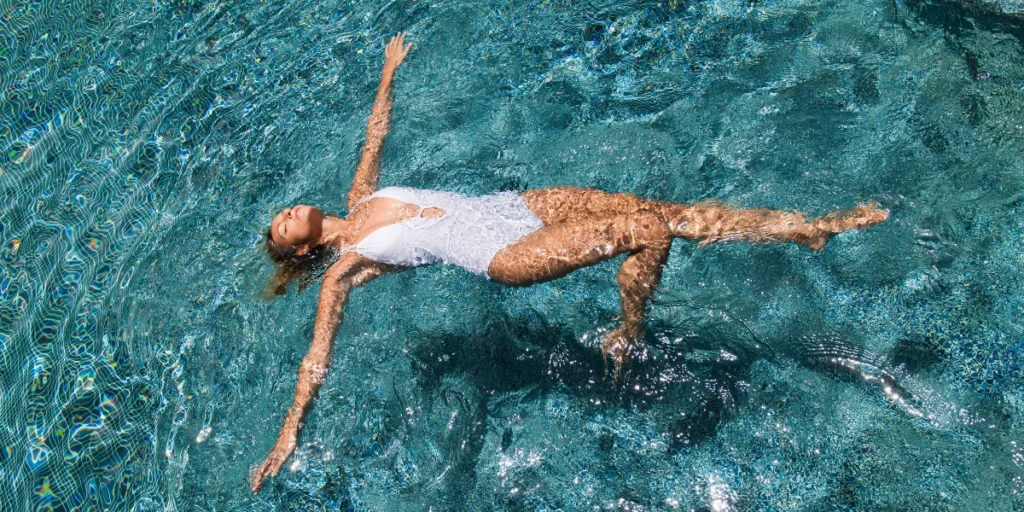
Understanding Chlorine Damage
Chlorine is added to swimming pools to kill harmful bacteria and maintain water hygiene. While it serves this purpose well, chlorine can strip the natural oils from your hair, leaving it vulnerable to damage. The chemical composition of chlorine can cause the cuticles of the hair shaft to open up, leading to moisture loss and protein damage. This can result in dryness, frizz, split ends, and even discoloration of the hair.
Pre-Swim Hair Protection
1. Apply a Leave-In Conditioner:
Before swimming, generously apply a leave-in conditioner to your hair. This forms a protective barrier that helps repel chlorine and prevents it from penetrating the hair shaft. Opt for a conditioner specifically designed for swimmers, as they often contain ingredients that can effectively shield your hair from chlorine damage.
2. Wet Your Hair:
Before diving into the pool, saturate your hair with clean, non-chlorinated water. Wetting your hair beforehand reduces its ability to absorb chlorinated pool water, minimizing the extent of chlorine penetration. This simple pre-swim step can significantly reduce the damage caused by chlorine exposure and help maintain the health of your hair.
3. Wear a Swim Cap:
Invest in a high-quality swim cap made of silicone or latex to provide an additional layer of protection for your hair. A swim cap creates a physical barrier between your hair and the chlorinated water, reducing chlorine exposure and minimizing damage. Ensure that your swim cap fits snugly to prevent water from seeping in and coming into contact with your hair.
Post-Swim Haircare Routine
1. Rinse Immediately:
After your swim, it’s crucial to rinse your hair immediately with fresh water to remove chlorine residue. This helps prevent prolonged exposure to chlorine, which can further damage your hair. Pay special attention to thoroughly rinsing your hair, focusing on the scalp and lengths to ensure all chlorine is washed away.
2. Use a Clarifying Shampoo:
Incorporate a clarifying shampoo into your post-swim haircare routine to effectively remove chlorine buildup and impurities. Look for shampoos specifically formulated to combat chlorine damage, as they are designed to gently cleanse and detoxify your hair without stripping its natural oils. Use the clarifying shampoo once or twice a week to keep your hair free from chlorine residue and maintain its health and vibrancy.
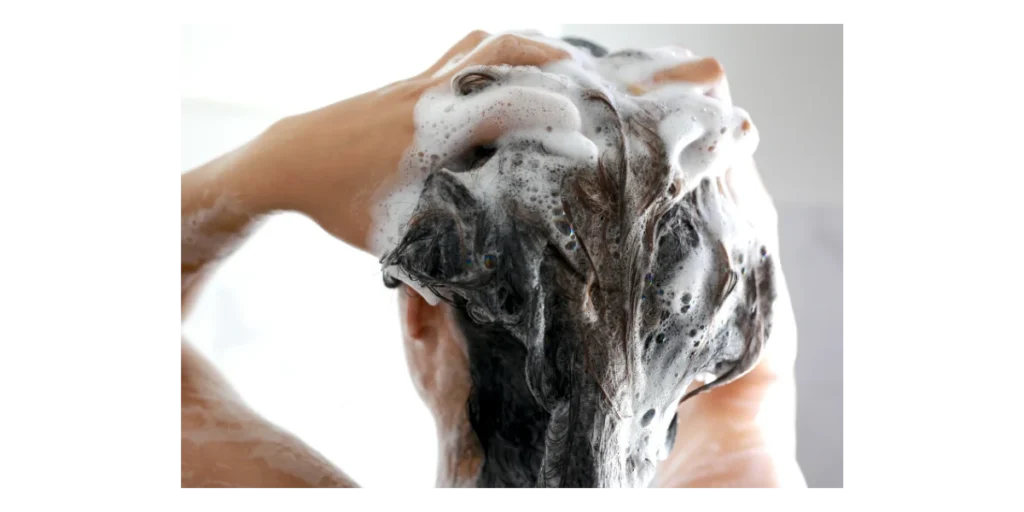
3. Deep Condition Regularly:
Treat your hair to deep conditioning treatments regularly to replenish moisture and repair any damage caused by chlorine exposure. Opt for hydrating hair masks having rice water for strong hairs or conditioners enriched with protein to nourish and strengthen your strands. Deep conditioning helps restore moisture balance, improves elasticity, and leaves your hair feeling soft, smooth, and revitalized after swimming.
4. Avoid Heat Styling:
Chlorine-damaged hair is already prone to dryness and breakage, so it’s essential to avoid excessive heat styling after swimming. Heat styling tools such as blow dryers, flat irons, and curling wands can further damage your hair, exacerbating the effects of chlorine exposure. Instead, allow your hair to air dry naturally or use a heat protectant spray if heat styling is necessary, but keep it to a minimum to protect your hair’s health.
Natural Remedies for Chlorine-Damaged Hair
1. Apple Cider Vinegar Rinse:
Apple cider vinegar is renowned for its clarifying properties, making it an excellent remedy for chlorine-damaged hair. Additionally, apple cider vinegar restores the pH balance of the scalp and hair, promoting healthy hair growth and preventing further damage.
- To create an apple cider vinegar rinse, dilute one part apple cider vinegar with three parts water and use it as a final rinse after shampooing.
- This helps remove chlorine buildup, residue, and impurities from the hair, leaving it clean, refreshed, and free from damage.
2. Coconut Oil Treatment
Coconut oil is a natural emollient rich in fatty acids and vitamins that deeply nourish and hydrate the hair. Regular use of coconut oil can help repair damage, reduce breakage, and restore shine to chlorine-damaged hair.
- To use coconut oil as a treatment for chlorine-damaged hair, warm a small amount of coconut oil in your hands and massage it into your hair and scalp.
- Focus on the ends, where damage is most prevalent, and leave the oil on for at least 30 minutes or overnight for maximum absorption.
- Then, wash your hair with a mild shampoo to remove the oil and reveal soft, moisturized strands.
3. Aloe Vera Gel
Aloe vera gel is a natural humectant that attracts and retains moisture, making it an ideal remedy for dry, damaged hair. Rich in vitamins, minerals, and enzymes, aloe vera gel soothes the scalp, reduces inflammation, and promotes hair growth.
- To use aloe vera gel for chlorine-damaged hair, apply a generous amount of pure aloe vera gel to damp hair, focusing on the ends.
- Leave it on for 30 minutes to an hour before rinsing it out with lukewarm water.
- Aloe vera gel leaves your hair feeling soft, smooth, and revitalized, making it an excellent natural remedy for chlorine-damaged locks.
4. Honey and Olive Oil Mask
Honey and olive oil are both natural moisturizers that help hydrate and repair dry, damaged hair. This nourishing mask deeply conditions the hair restores moisture balance, and improves elasticity, leaving your locks soft, silky, and resilient to chlorine damage.
- To create a honey and olive oil mask, mix equal parts honey and extra virgin olive oil in a bowl until well combined.
- Apply the mixture to damp hair, focusing on the lengths and ends, and cover your hair with a shower cap or towel.
- Leave the mask on for 30 minutes to an hour before rinsing it out with warm water.
5. Avocado and Banana Hair Mask
Avocado and banana are both rich in vitamins, minerals, and antioxidants that nourish and strengthen the hair. This luxurious mask replenishes moisture, repairs damage, and enhances hair texture, leaving your locks looking and feeling healthier after exposure to chlorine.
- To create an avocado and banana hair mask, mash one ripe avocado and one ripe banana in a bowl until smooth.
- Apply the mixture to damp hair, concentrating on the ends, and cover your hair with a shower cap or towel.
- Leave the mask on for 30 minutes to an hour before rinsing it out with lukewarm water.
Protective Hairstyles for Swimmers
1. Braids and Twists
- Braids and twists are not only stylish but also practical for swimmers.
- These protective hairstyles keep your hair neatly contained and minimize its exposure to chlorinated water.
- By braiding or twisting your hair before swimming, you can prevent tangling and reduce the likelihood of chlorine penetrating the hair shaft.
- Plus, braids and twists are versatile, allowing you to create different looks while keeping your hair protected.
2. High Bun or Ponytail
- A high bun or ponytail is a simple yet effective hairstyle for swimmers.
- By gathering your hair into a high bun or ponytail before diving into the pool, you can keep it away from the water and minimize chlorine exposure.
- This helps preserve the natural oils in your hair and reduces the risk of dryness and damage.
- Additionally, a high bun or ponytail is quick to create and requires minimal maintenance, making it ideal for swimmers on the go.
3. Swim Cap with Hair Tucked In
- While not technically a hairstyle, wearing a swim cap with your hair tucked inside is one of the most effective ways to protect your hair from chlorine damage.
- Invest in a high-quality swim cap made of silicone or latex, and ensure that your hair is securely tucked inside before swimming.
- A swim cap creates a physical barrier between your hair and the chlorinated water, minimizing chlorine exposure and preserving the health of your locks.
- Plus, swim caps come in various colors and designs, allowing you to express your style while keeping your hair protected.
4. Protective Headscarf or Wrap
- For swimmers with longer hair or those who prefer not to wear a swim cap, a protective headscarf or wrap can offer an alternative solution.
- Wrap your hair in a silk or satin scarf before swimming to create a barrier between your hair and the chlorine.
- This helps prevent moisture loss and minimizes damage, particularly for those with delicate or textured hair.
- Additionally, headscarves and wraps come in a variety of colors and patterns, allowing you to customize your look while keeping your hair protected.
5. Low Maintenance Styles
- If you prefer low-maintenance hairstyles, opt for simple styles such as a low bun or loose braid.
- These styles require minimal effort to create and maintain, making them perfect for swimmers who want to protect their hair without spending too much time on styling.
- By keeping your hair neatly gathered and away from the water, you can reduce chlorine exposure and maintain the health and integrity of your locks.
- Low-maintenance styles are also versatile and can be easily transitioned from the pool to other activities, ensuring that your hair stays protected wherever you go.
Bottom Line:
Protecting hair from chlorine damage is essential for maintaining health and vitality, especially if you’re a frequent swimmer. By following the tips outlined in this guide and incorporating them into your haircare routine, you can minimize the harmful effects of chlorine and keep your locks looking luscious and radiant. Remember to prioritize hydration, nourishment, and protection to safeguard your hair from the damaging effects of chlorine, allowing you to enjoy your time in the pool without compromising the health of your mane.


